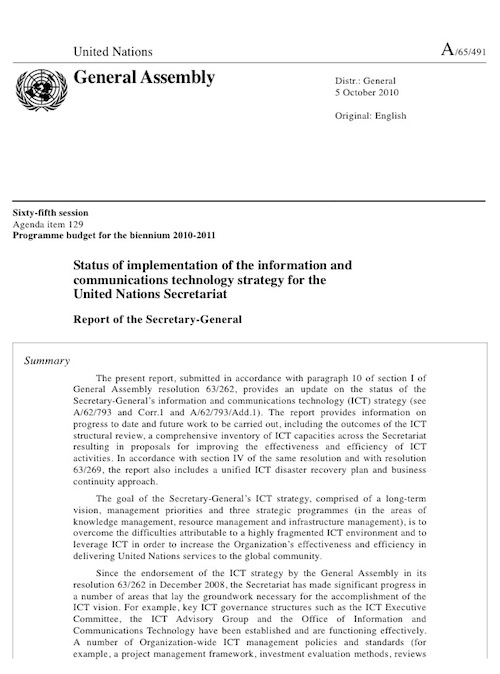Status of implementation of the information and communications technology strategy for the United Nations Secretariat, Report of the Secretary-General (A/65/491) prominently underscores the Crisis Information Management (CiM) Strategy, which the ICT4Peace Foundation has supported the UN’s Office of Information and Communications Technology (OICT) to design and develop since 2008.
Under the section ‘United Nations system-wide harmonisation efforts’, the report notes (Pg 38),
Crisis information management strategy. The Crisis Information Management Strategy is based on the recognition that the United Nations, its Member States, constituent agencies and non-governmental organizations need to improve such information management capacity in the identification, prevention, mitigation, response and recovery of all types of crises, natural as well as man- made. The strategy will leverage and enhance this capacity and provide mechanisms to integrate and share information across the United Nations system. The Office of Information and Communications Technology, together with the Office for the Coordination of Humanitarian Affairs, the Department of Peacekeeping Operations and the Department of Field Support, has worked closely with United Nations organizations such as the Office of the United Nations High Commissioner for Refugees (UNHCR), the United Nations Children’s Fund (UNICEF), the United Nations Development Programme (UNDP) and WFP and other entities such as the ICT for Peace Foundation in developing and implementing this strategy. It is envisaged that membership will be expanded to include other United Nations organizations in the near future.
Presented to the UN General Assembly at the sixty-fifth session, download the report in full here. The report is available in Arabic, Chinese, French, Russian, Spanish and English.
Also see United Nations core ICT strategy incorporates crisis information management.

